Share
- Jump to:
Last year’s restaurant tech trends are this year’s normal with online ordering, mobile apps, and QR codes now commonplace. Even the most digitally reluctant restaurants have had to accept that they need a website and reservations page, while other brands have revolutionized their systems and are leading the industry in embracing the amazing tech now available.
The good news is that all this tech, once it’s in place, makes operators’ lives so much easier. Incredible technologies are being invented and integrated with others to produce efficient restaurant management systems that keep you in control of customer data.
In this article, we cover what the top tech-savvy restaurant brands are doing and what restaurant tech trends we can expect to see more of in the future, including:
How restaurants are getting smart with their data – without getting lost in spreadsheets.
What’s next in the ghost kitchen / virtual restaurant explosion.
Experiments in the metaverse and NFTs for food brands (for better or worse).
Ready to keep up?
The Importance of the Right Restaurant Technology
“Do we really need more tech?” you might think. “We’ve already got online ordering, employee scheduling apps, and QR code menus. What’s left?”
If 2020 has taught us anything, it’s to not be complacent. No matter how good your food, service, and atmosphere, if your tech system can’t keep up, you’re toast.
With so much change happening, your systems may become outdated and unable to keep up with the competition before you know it. That’s why it’s essential to know what’s going on, what new technologies are emerging, and which ones are relevant to you.
Consider these questions, for instance:
Is your online ordering system capturing customer data? Or are you relying on third-party apps (which keep a wall between you and customers)?
Do you know whether Gen Alphas prefer to pay with contactless systems or NFTs?
Could you be developing better recipes using AI-assisted tech?
Are you losing revenue because you don’t offer ordering kiosks?
Do you know what the heck the Metaverse is?
It’s important to stay one step ahead of the competition. Even if you don’t implement every new piece of tech, it’s good to be aware of what’s out there and how it is shaping the industry, so that you’re ready to quickly pivot if and when you do need to upgrade.
Restaurant Tech Trends in 2022: It’s Gonna Be a Wild One
2022 is a fascinating year to talk about trends. We’re emerging from a pandemic that altered consumer behavior more than anything in our lifetimes. Meanwhile, truly revolutionary technologies are emerging by the dozens out of every facet of the industry, from advanced data analytics to AI recipe development and robot salad chefs.
No one knows how all of this will come together—or what black swan event is around the next corner. But we can look at the movers and shakers, as well as the data, and make an educated guess about where things are headed.
Here are the top trends we see shaping the industry over the next year.
1. Digital ordering and payment need to be easy and frictionless.
After delivery apps' rapid pandemic growth, smart restaurant operators are now fighting to regain control of the market and meet customers where they are—online. Making your online ordering and payments easy for customers has never been more important.
The challenge? You're competing with tech platforms like DoorDash and Uber Eats. These platforms have billions in funding and teams of data analysts working to capture as much of the market as possible.
The only way to beat the apps is to get customers on your own ordering platforms, where you can capture their data and use it to find more customers who love what's on your menu.
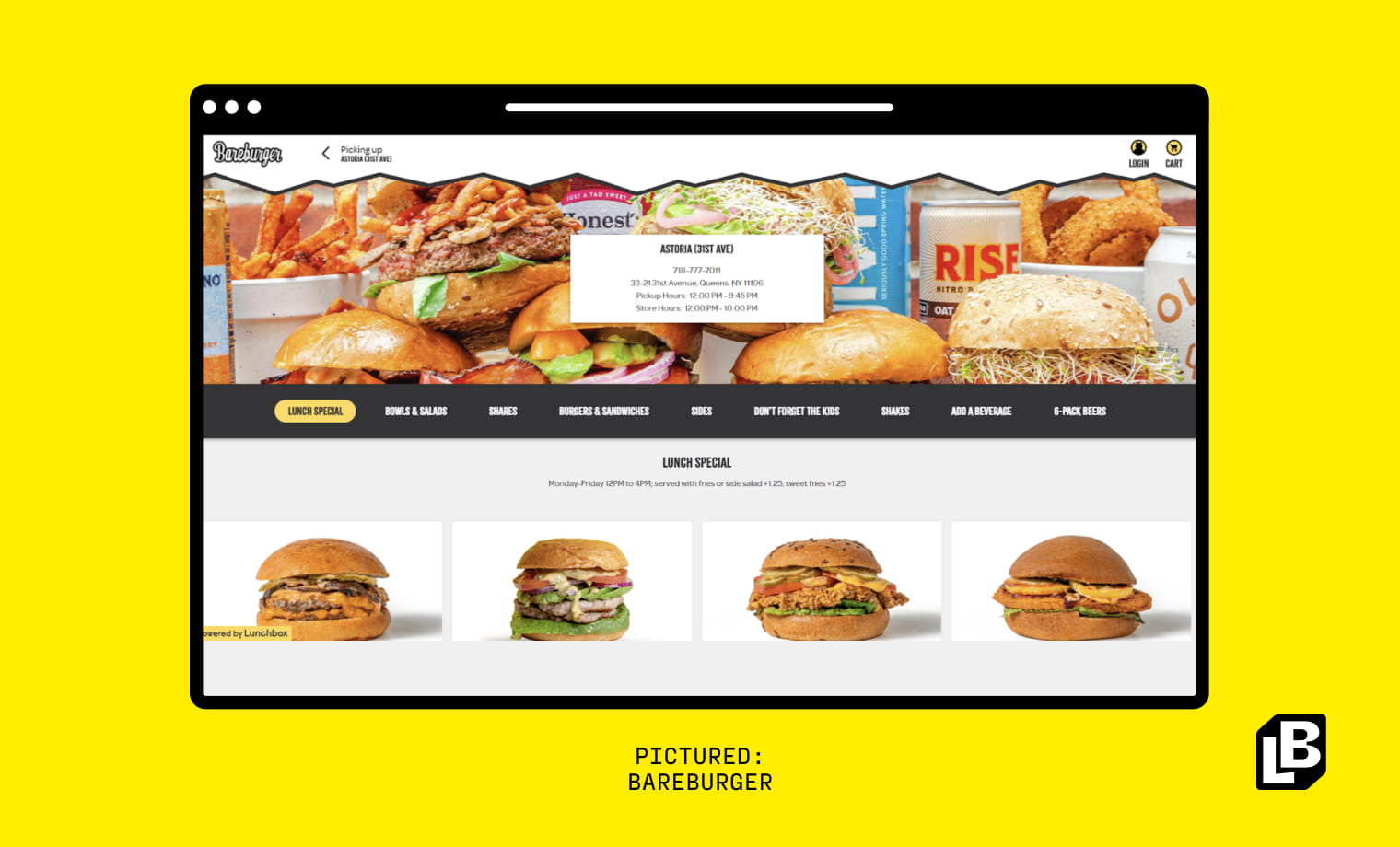
Bareburger’s online ordering platform is built with a user experience to rival that of DoorDash’s, making it competitive among tech-savvy customers.
It’s why our Third-to-First-Party Playbook is so popular: the online gold rush is over. Now it’s about creating a sustainable digital sales channel that works long-term. We were already seeing scuffles for better first-party experiences in 2021. In 2022, it’ll be a full-on brawl.
The modern approach requires a seamless omnichannel experience, where a customer gets consistent excellent service whether they walk in or order online, on your app, or at a kiosk. That requires investing in your own ordering software which will pay you back in spades over time. Don’t give away your margins and your customer relationships to the delivery apps—take control and build a foundation for future success.
2. Data analysis is everything for smarter foodservice.
Data is not only important in your customer-facing departments. It can be a gamechanger for your back-of-house, which—despite being the most complex and arguably most important part of the business—is often neglected in terms of tech innovation.
Improving how you manage your recipes, inventory, food costs, and other kitchen data can lead to greater profit margins, employee satisfaction and loyalty, and more.
We’re starting to see restaurant brands manage their recipes and food data with the razor-sharp precision of meal kits like HelloFresh and SunBasket.
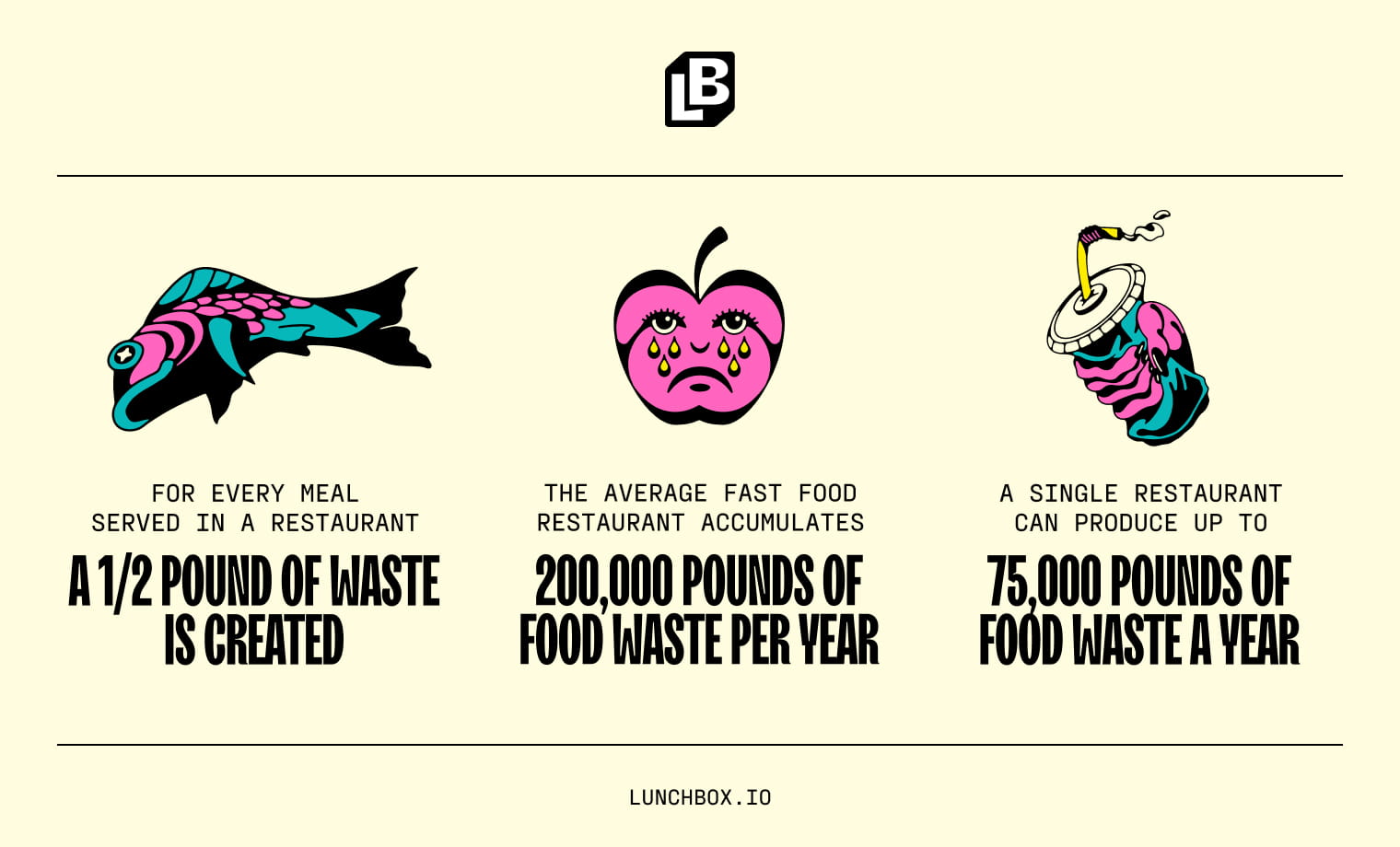
Anywhere between 4 and 10 percent of food in restaurants never makes it to customers. That’s straight up lost margin via food waste.
Systems like Galley and Apicbase are unlocking new ways of thinking about kitchen management data. Putting the recipe back at the center of the kitchen creates a “universal language for food” to capture deeper insights, such as food cost variance by comparing actual to theoretical food costs. Granular data analysis and management can help brands achieve new levels of efficiency and improve margins.
This is just the tip of the data iceberg. Other areas are seeing innovations emerge too:
Using data to measure food costs and margins at the store, regional, or business level.
Using data to count inventory in real-time for more optimized purchase orders.
Using data to track team performance in the kitchen.
It’s a data world we live in now.
3. Where is off-premises dining demand headed?
During the height of pandemic restrictions, consumers got used to new technologies like QR code ordering and kiosks for virtual brands. With so many orders processed online and being delivered, people are now expecting a better experience on ordering sites and apps, right through to an accurate prediction of when the food will arrive. Operators used to give primary focus to training staff to offer excellent service—now they’re honed in on the online customer experience.
Delivery and takeout demand, rather than slackening off after the lifting of pandemic restrictions, has continued to grow. Even before the pandemic, delivery was growing fast—and the forecast was for more growth without the extra help from government lockdowns and dining room closures.
Now, Statista projects the online food delivery market in the U.S. to reach $66 billion in 2022, and continue its steady growth of 10% year-on-year to reach $96 billion by 2026. That’s not quite as fast as the growth before and during the pandemic, but with user penetration at nearly 50%, there’s plenty of room for new users to be brought on board.
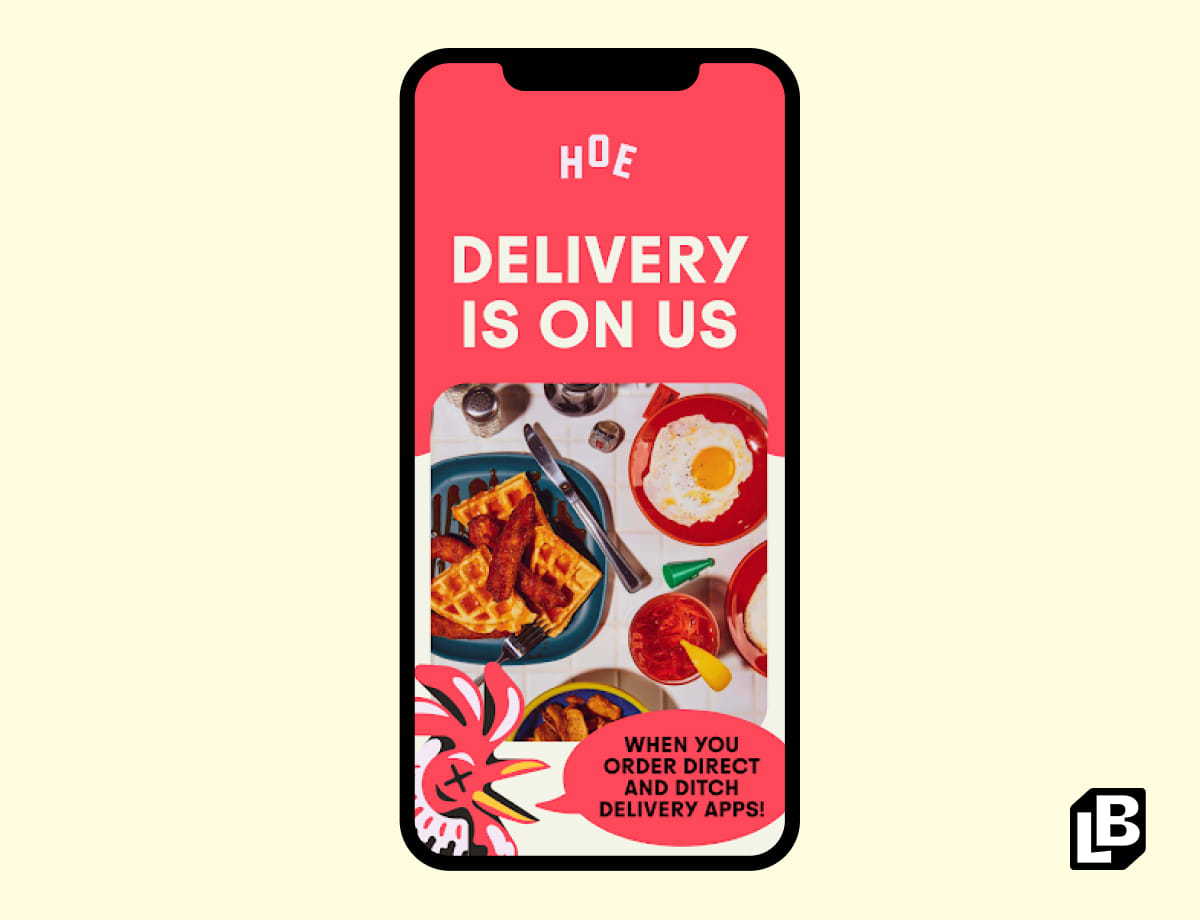
Hang Over Easy isn’t slowing down on its delivery focus. These campaigns, created by Lunchbox Studio, are driving tons of first-party (read: more profitable) orders.
The other big question for off-premises dining post-pandemic is whether curbside pickup is here to stay or if it was just a COVID-era trend.
A survey of more than 3,000 U.S. consumers by virtual brand tech enabler Nextbite found that 43% ordered food for delivery at least once a month. But 23% of delivery users didn’t order takeout at all.
Restaurants are trying to incentivize pickup orders to reduce their delivery costs by offering more convenient, frictionless curbside options, but time will tell if consumers are willing to sacrifice the convenience of home delivery.
4. Improved customer loyalty and engagement tech.
There’s no doubt that loyalty programs work. A PYMNTS study found that 44% of U.S. consumers surveyed use loyalty programs, while 39% cited loyalty programs as an important way to encourage more spending.
The trick has always been to build loyalty without giving away too much of your precious product. Chipotle has found success in offering digital rewards once customers are on-board with its loyalty app. The chain gamifies each customer’s interaction with the brand and rewards loyalty with badges and achievements.
“Loyalty” is the blending of customer data and incentive programs to inspire habit and connection. This has always existed for restaurants—but it’s only becoming more competitive.

Get a new customer, eat for a day. Get a loyal customer, eat for a lifetime.
New tech in the customer loyalty and engagement field can offer a lot more than a free tenth meal. Using your database of customer profiles, you can provide personalized offers and discounts to entice customers back in-store or to order online. For example, you can look at their habits and trigger automated emails on their third visit—or send them a birthday voucher for their favorite drink.
HubSpot found that message personalization is the top tactic used by marketers to increase engagement rates. Customers are far more likely to open, read, and engage with emails and messages that talk to them personally, than mass-market blasts. In fact, Statista found that a whopping 90% of consumers find personalization somewhat to very appealing.
Meanwhile, McKinsey found that 78% of consumers are more likely to recommend to their family and friends a brand that personalizes its messages. The same percentage is more likely to make a repeat purchase.
Clearly, there are huge opportunities to maximize loyalty with personalization, as well as the potential for excellent ROI when you take proper advantage of the smartest loyalty tech out there.
5. The diversification of ghost kitchens & virtual restaurants.
The continued rapid development of restaurant tech in order consolidation, kitchen management, and delivery operations is helping multiply the potential of ghost kitchens and virtual restaurants even further. As ghost kitchens become even more common, the concept is being adopted in diverse ways by different brands.
The full delivery-only, tech-optimized ghost kitchen model works for major QSRs, such as Chick-fil-A, Wendy’s, Chili’s, and Red Robin, which are going all-in on the concept. But smaller businesses can’t necessarily make the concept viable given tighter budgets and less upfront investment. Many prefer to provide their own ordering and delivery services so they can keep first-party data and avoid fees.
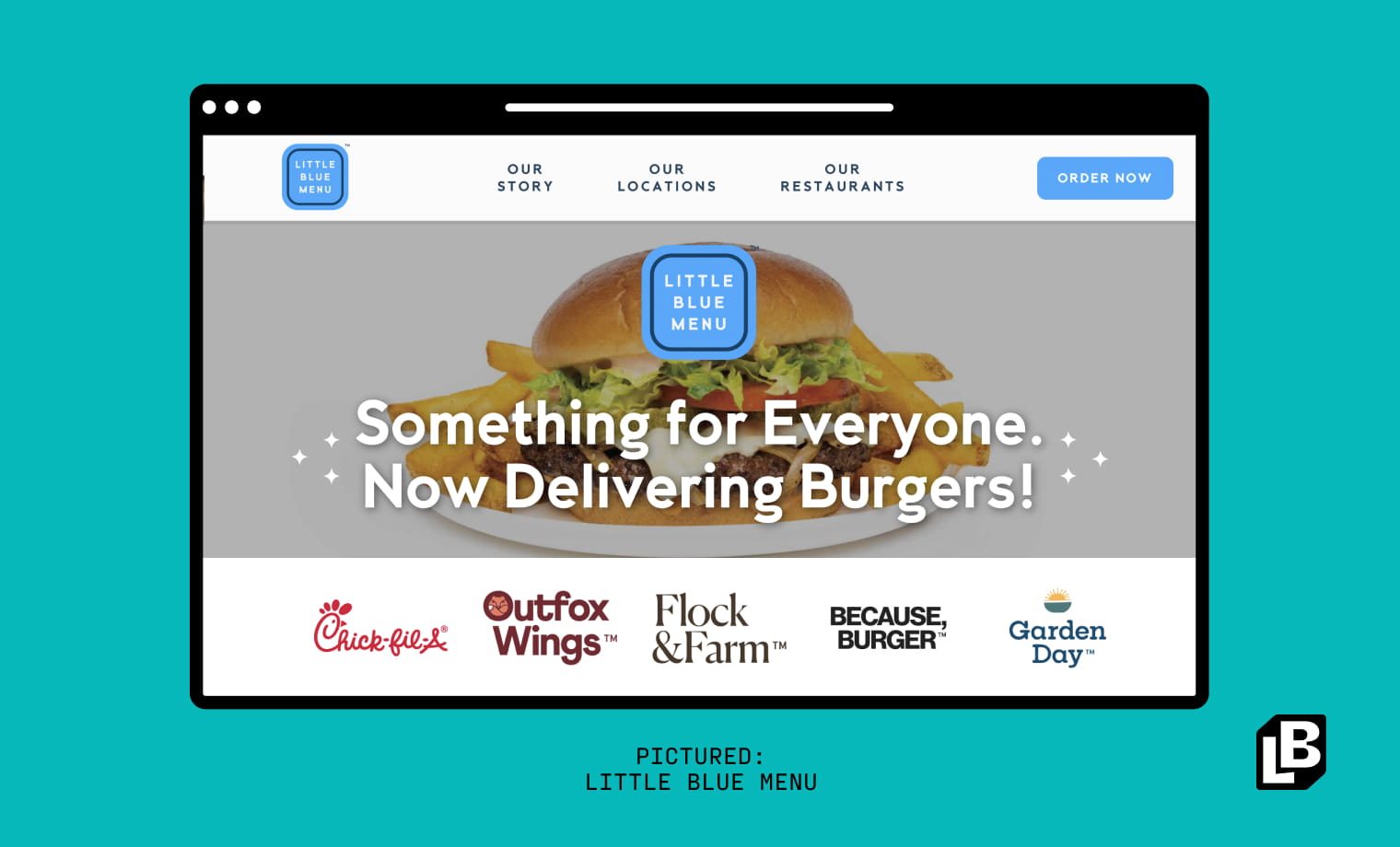
Little Blue Menu virtual concept featuring different restaurants.
Hybrid models involving storefronts, pickup, and delivery areas, or virtual brands operating out of existing restaurants could work better for regional restaurant chains and independent operators.
Other players are offering virtual food halls, combining the idea of communal dining space with the ghost kitchen concept—multiple brands available in one transaction. Virtual restaurant specialist C3 and our online ordering experts at Lunchbox are collaborating on such a virtual food hall, which allows users to order from multiple brands in one transaction.
The idea allows operators to keep their customer data and make operations more efficient to keep costs down. Meanwhile, it also offers customers more choice–which is the main benefit of a third-party app.
The concept is leading the way in showing what can be done with ghost kitchens and is offering delivery in multiple cities already with more to come.
Ghost kitchens were helped by the pandemic, but the trend was established before the restaurant world was turned upside down. The next phase seems to be a creative one, where the idea of delivery-only, optimized virtual brands can be implemented in whichever way is best for your particular restaurant.
6. The metaverse holds exciting yet untested opportunities for the restaurant industry.
The metaverse is here. It’s even being written about by food tech publications. Emerging trends in what is being called Web 3.0 — a digital layer of augmented or virtual reality a step deeper than the current internet — are coming to a restaurant near you.
Virtual reality marketplaces including a Meataverse from Slim Jim and numerous NFT launches by food brands are already underway. We can soon look forward to augmented reality marketing campaigns, virtual tours before choosing your table for an online reservation, and crypto payments.
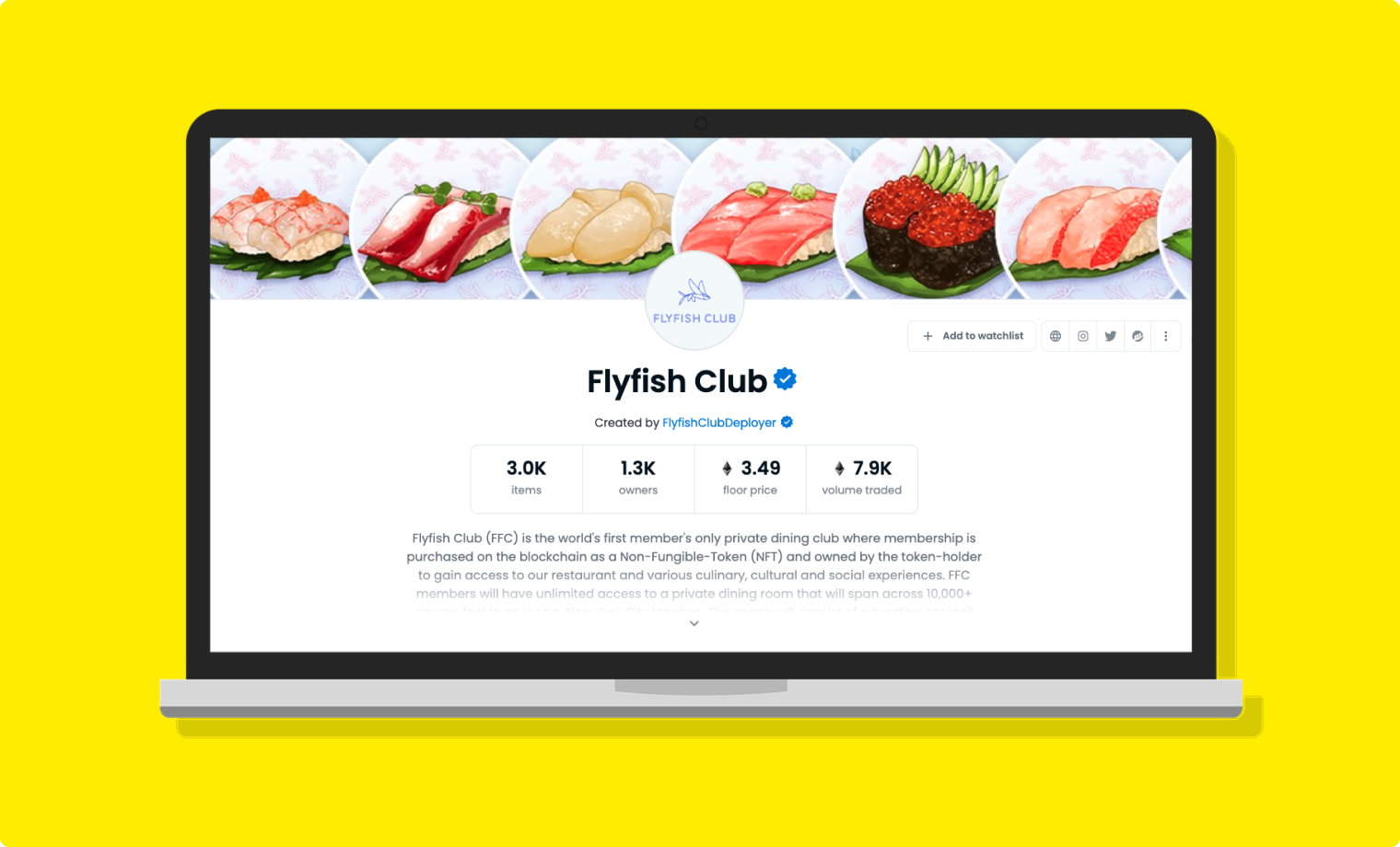
Flyfish Club is the first restaurant club that uses an NFT to verify membership. Prices start at 3 ETH (roughly $10,000 at the time of writing.
These concepts sound more exciting than some of the innovations in data capture, but they’re unproven. Some brands are experimenting with ideas, but most restaurants will be looking to solve real-world problems before adding a new layer of virtual reality.
However, restaurant operators should certainly be aware of what’s going on so they don’t slip behind with ordering and payment methods. When you consider how quickly things have gone digital, the next generation may soon be used to ordering in the metaverse.
7. Novel automation & AI use cases for drive-thrus and beyond.
With delivery orders up and staff shortages still plaguing the industry, automation and robotics are coming into an even sharper focus in 2022.
We will likely see more robotics and automation in the larger fast-casual chains and ghost kitchens, where national and global brands can afford to experiment with the latest tech.
Sweetgreen’s acquisition of robotic kitchen start-up Spyce is one to watch, as the brand eyes an expansion in the healthy fast-food market. The fully automated robotic kitchen can produce 49 different recipes in three minutes or less with no human intervention.
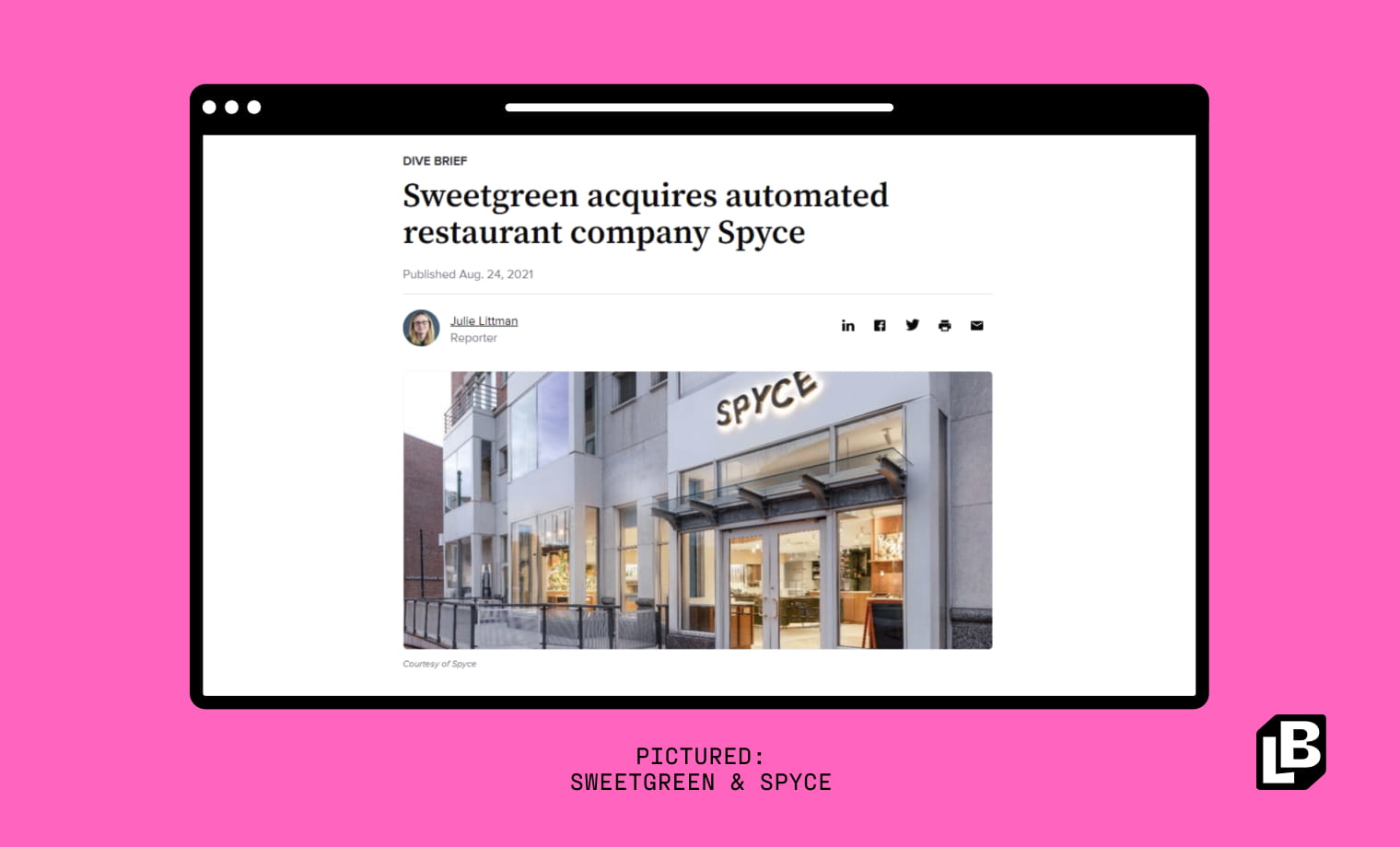
Food robots are coming for your salads.
Wendy’s signed a deal with Google last year to bring the tech company’s AI and voice recognition tools to its restaurants. Not only will customers be able to order over the phone or at a drive-thru kiosk by speaking to virtual, AI-powered bots, but the system will also be able to identify customers and predict what they might want based on previous visits.
Upmarket fast-food franchise BurgerFi is also trialing AI ordering systems, this time from within the vehicle. The in-car ordering system allows you to make voice commands to a car’s onboard computer, which can help the customer navigate to the brand’s nearest location and place an order, and even notify the restaurant of their arrival time.
Another interesting area for the future is the possibility of AI-powered recipe development. Foodpairing has been the multi-sensory chef’s secret source of inspiration for new flavor combos, using the chemical make-up of different ingredients to pair them using the science of taste and aroma. The question isn’t will the technology get there, it’s more: Are we ready for a meal not only prepared by a robot but also invented by an algorithm? Do we really want our favorite chefs replaced by lines of code?
If it tastes good enough, perhaps. In the meantime, development chefs will continue to be assisted by smarter AI in creating new and exciting dishes in the fine-dining space.
STAY ONE STEP AHEAD OF THE COMPETITION
Whether you’re intrigued by opportunities in the metaverse or more focused on building a database of marketable customer profiles, one common thread we’re seeing is that clean, first-party customer data is key to long-term growth.
To fully realize the benefits of new technologies, you must own your customer data. That’s why getting your customers onto your own ordering platforms and offering an excellent customer experience is essential.
Not only will it help you engage your customers better using the latest tech, but it will also allow you to spot future trends faster and predict what this most unpredictable of futures might hold.
To find out how Lunchbox can help you grow first-party sales and take control of your customer data, book a demo below.